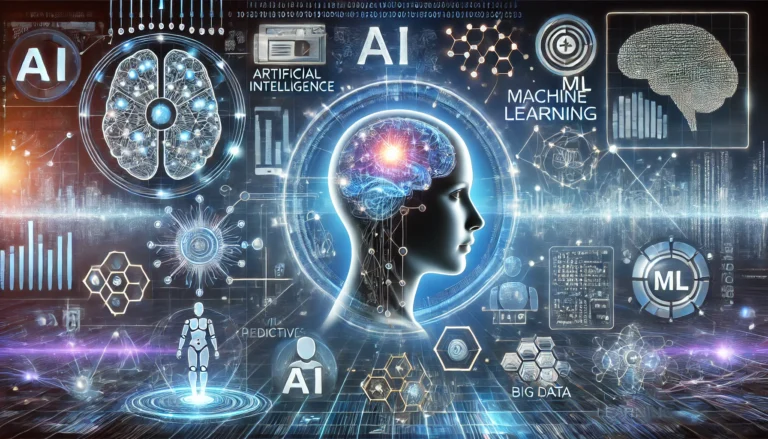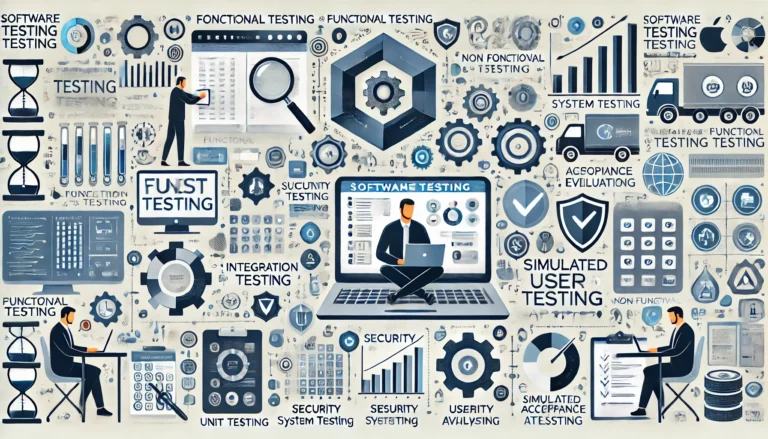In 2025, the software development industry is expected to undergo significant transformations. The way we create and use software is changing as a result of emerging technology and changing requirements, expanding beyond the boundaries of what is achievable. These trends—which include the emergence of artificial intelligence, the incorporation of blockchain technology, and the advancement of user experience design—are poised to completely alter the field.
In the coming years, innovation and efficiency will be driven by the top software development trends that we will examine in this article along with their impact on industry. Get ready as we explore what is ahead for software development in the future.
Best Software Development Trends for 2025-
7 Best software development trends for 2024 are:
Artificial Intelligence and Machine Learning
These days, machine learning (ML) and artificial intelligence (AI) are more than just buzzwords; they’re vital components of software development. By assisting developers in writing more precise and effective code revolutionizing the coding process. These artificial intelligence (AI) technologies can anticipate code fragments, make improvement suggestions, and even troubleshoot issues, substantially accelerating development and reducing errors.
AI and ML are improving application intelligence beyond just helping with development. AI is improving patient care and diagnosis accuracy in industries like healthcare, and they provide tailored user experiences and predictive analytics. These technologies will continue to impact software development as they progress, influencing how we produce and use software in the future.
Quantum computing
With its amazing potential, quantum computing, though yet in its inception, promises to revolutionize software creation in the years to come. Quantum computers are capable of performing complicated calculations at speeds considerably above current capabilities by utilizing the ideas of quantum physics.
Even while fully functional quantum computing is still a few years off, researchers and developers are actively exploring its potential. The development of technology is expected to open up new avenues for creativity and problem-solving, maybe completely changing the way we tackle difficult problems.
Blockchain technology
The technology known as blockchain, which powers cryptocurrencies, is expanding into a wide range of industries outside of finance. Blockchain is improving security, traceability, and transparency in software development.
We’ll probably witness an increase in innovative applications and integrations as businesses start to realize the possibilities of blockchain. To properly utilize this technology and all of its potential, developers will need to acquire new knowledge and talents.
Low-Code and No-Code Development
Low-code and no-code development platforms are becoming more and more popular as a result of the disparity between the growing demand for software and the scarcity of qualified developers. These tools use pre-built components and attractive visual interfaces to allow users to create applications with little to no coding knowledge. This strategy reduces expenses and speeds up development, which enables companies to launch applications more swiftly.
Platforms that require little or no code are extremely helpful for small and medium-sized businesses (SMEs) who have little funding for IT. They also make it possible for non-technical team members to engage in the development process, which promotes innovation and improves interorganizational collaboration.
AR and VR Technologies
By providing immersive experiences, augmented reality (AR) and virtual reality (VR) are transforming the way we interact with digital content. Numerous industries, including gaming, entertainment, education, and healthcare, are noticing the impact of these technologies. AR and VR are revolutionizing software development by improving user experiences and creating new avenues for data visualization and interaction.
Applications for AR and VR in software development are expected to expand as these technologies develop further, offering even more creative methods for users to interact with digital material.
Edge Computing
While edge computing moves this activity closer to the point of data generation, cloud computing centralized data processing. The growing need for low-latency and real-time processing applications, particularly in Internet of Things settings, is driving the adoption of this strategy. Applications can respond faster and more effectively when data is handled at the network’s edge.
For applications like industrial automation, smart cities, and driverless cars that need real-time data analysis, edge computing is crucial. The importance of edge computing will only increase with the proliferation of connected devices, as it will enable quicker and more efficient data processing.
Cloud-Native Development
Software development has been completely transformed by cloud computing, and its effects are only going to grow. When compared to traditional on-premises systems, cloud-native development offers greater scalability, flexibility, and robustness. It also fully utilizes the advantages of the cloud.
The microservices architecture, which separates programs into smaller, independent services, is a crucial component of cloud-native development. This method makes maintenance easier and results in a more effective use of resources. We may anticipate seeing more sophisticated and scalable apps as more companies adopt cloud-native techniques.
Final Words
Technology breakthroughs like artificial intelligence (AI), machine learning, and quantum computing have the potential to completely transform software development and how it is developed and used. In the quickly changing IT industry, developers and companies can position themselves for success by keeping abreast of current trends and adjusting to them.
There’s no denying that change will always be a part of software development, even in the years beyond 2025. Accepting these new trends will encourage creativity and get us ready for the upcoming opportunities and challenges.














